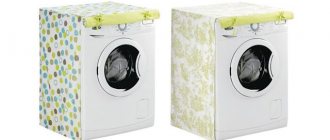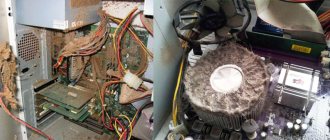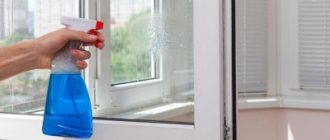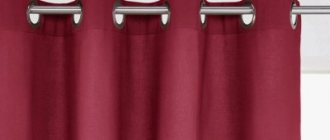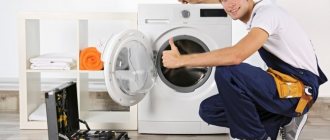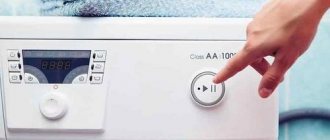The washing machine must be connected to three networks at once: water supply, sewerage and electricity. Therefore, it is necessary to choose a place for installation so that all three systems are located nearby or there is an opportunity to bring them there. The optimal places to install a washing machine are the bathtub, toilet and kitchen - they have all the necessary communications. Most often they require a little modification, but connecting the washing machine is not very difficult. The connection process itself is simple, you don’t need to do anything super complicated, if you have “direct” ones, you can do everything yourself.
Site selection and equipment
Before you go to the store to choose a washing machine, think about where you will place it. Measure the depth, width and height of the selected location, adding at least 1 cm on all sides (correction for uneven walls). Agree, the situation when the equipment is physically unable to stand on the prepared area cannot be called pleasant.
The most common options for the location of automatic machines are:
- Bathroom
It is convenient because most of the communications are nearby. In addition, the device fits harmoniously into the surrounding space. To save space, the machine can be installed under the sink. Then you will have to choose a special form of plumbing with a drain in the back.
However, experts do not recommend placing the machine in the bathroom if there is an alternative, since in conditions of high humidity the parts wear out much faster and rust appears.
- Kitchen
Also, all connection nodes are located nearby, there is no need to re-equip anything additional. If you think through the design of the headset in advance, you can install a built-in washing machine or hide it behind one of the cabinet doors.
There are disadvantages here: increased humidity and temperature effects from the stove and oven. Therefore, it is recommended to install the device away from heating devices.
- Toilet
Some originals manage to install the unit even in a small toilet. In this case, the machine is located above the toilet.
This option requires special preparation and thoughtfulness: you need to be confident in the strength of the walls, install a reliable podium, and provide a vibration damper.
- Corridor
The location in the hallway is more common in desperate situations, when there is simply nowhere else to put the equipment.
The location has few positive features: communications have to be delayed, equipment takes up a lot of space, noise can be heard in all rooms.
- Lumber room
If you have a storage closet in your home, you can try converting it into a laundry room. This way, the washing machine will not interfere with anyone, and will be preserved better.
Some houses have special rooms that are designed for washing. If you are the lucky owner of such an apartment, well, congratulations, you are lucky.
- Basement
Such placement is possible in a private house, provided that the basement is heated and has electricity, water and sewerage installed.
If all requirements are met, this arrangement is very advantageous: the unit is not exposed to moisture, and its operation is inaudible for residents.
When the choice in favor of a certain room is made, you should think about the surface on which the machine will be located. The floor in this place should be hard and level.
Small differences in height can be corrected with the help of screw-in machine legs or a rubber mat, but they cannot compensate for strong unevenness. Therefore, if the installation is carried out on a wooden or uneven floor, then it makes sense to think about filling the area under the device with a concrete screed or installing a pallet.
TYPICAL MISTAKES WHEN CONDUCTING INSTALLATION WORK
Often during repairs, beginners make a number of serious mistakes:
- Poor fixation of connections. Under high loads, unreliable fasteners may become detached, and the entire contents will spill out under pressure. All joints should be tightly secured to avoid such problems.
- Small siphon diameter. If the size of the part is incorrectly calculated, the line may burst under high pressure.
- Excessively long drain hose. The standard pump of the machine will not cope with the pumping function if the length of the hose exceeds 4 meters. It is better to limit yourself to a short tube or think about a different location for the “washer”.
- Small sink size when organizing a drain. With large drain volumes, the small sink will fill up in a short time, and then dirty water will rush over the edge. It is advisable to think over this point and choose a different option for connecting to the sewer.
Getting to know the instructions
Before you start working with the automatic machine, read the instructions! It contains a lot of useful information: what kind of outlet should there be, how to connect the drain and water supply, how to adjust the position of the unit, what malfunctions occur most often and whether you can fix them yourself, and much more.
Reading technical documentation is a separate step, since rarely does anyone turn to the manufacturer's prompts before a problem arises. This is usually only done if something doesn't go according to plan. You shouldn't do that.
The instructions provide detailed recommendations regarding the model of your washing machine, compliance with which will prevent many troubles. Do not ignore the manufacturer's advice: in the event of a breakdown, failure to follow them may result in your case being considered non-warranty.
Expert advice
Some experts recommend adhering to the following features when installing a washing machine:
Use an adapter on the water supply. It will reduce the negative effect of periodically occurring water hammer in the system.
By following all the above recommendations, you will receive a reliable and safe connection to your washing machine.
Do not connect the products to gas or solid fuel dispensers. Since this may disrupt the setting mode in the washing machine. And this will cause breakdown of the entire product.
By following these simple, but at the same time numerous rules, you can achieve correct connection of the product. And this will be the key to reliable and long-term operation of the washing machine.
Preparation of communications
The washing machine is connected to three systems: sewerage, water supply and electricity.
Sewerage
There are several varieties possible here:
- Siphon under the sink - you need to install a splitter to the drain running under the sink. It will provide an outlet for the washing machine hose.
- Directly to the sewer - in this case, you will have to make a special outlet in the pipes or attach a tee when approaching the sink or bathtub.
- In the toilet or sink - the simplest and most unreliable option. Using a hook, the hose is hung on the plumbing fixtures, and the water flows out freely after washing.
Water supply
Most often, the machine is connected to cold water, and the device itself, using heating elements, heats it to the required temperature. However, some models provide connection to both cold and hot water.
This reduces electricity consumption, but increases the cost of hot water supply. In addition, such water often contains impurities and rust, which can lead to damage. And the units are more expensive. Therefore, the most common option remains connecting to cold water.
It is quite simple to install an additional outlet for water on polypropylene, metal-plastic and plastic pipes. A tee with one transition to metal should be installed. If there is a free outlet on the water supply pipes, great, the task is greatly simplified! All that remains is to install a shut-off valve.
You can install the simplest ball one. At the same time, do not forget to apply sealant and flax tow. There is an alternative option: a tee with a built-in tap. They are designed specifically for washing and dishwashing appliances. It is more convenient to install such a part, but if one of the parts fails, you will have to change the entire element, and they cost a lot.
Electricity supply
For correct and safe operation, the machine is connected to a separate grounded outlet. Please be aware that if there is no grounding, the manufacturer's warranty on the unit will no longer apply.
It must be located in close proximity to the device, since connecting extension cords or straining the wire is not allowed.
If there is no outlet that meets the stated requirements, contact an electrician. It will extend a separate power supply line from the panel with the required current parameters.
Do not attempt to install the outlet yourself unless you are properly qualified!
Required Tools
Installing a washing machine should begin with the preparation of tools, without which it is not possible to perform this action:
- Adjustable wrench.
- Gas key.
- The hose is flexible for connection to the pipeline system.
- Adapter with threaded connection.
- Withdrawal if necessary.
- Depending on the pipes to which you will need to connect the washing machine, you will need to acquire a crimp coupling, fitting or tee.
The connection process itself is simple, you don’t need to do anything super complicated, if you have “direct” ones, you can do everything yourself.
Connection and installation
Now all that remains is to free the unit from the packaging, remove the foam protection and unscrew the shipping bolts that are located on the back of the case.
They are designed to protect the internal parts of the device from damage during transport. Place plastic plugs (included in the kit) into the resulting holes.
Do not throw away shipping fasteners. They will come in handy when you move or need to take the device to service.
The corrugated drain hose into the sewer (usually included in the kit) must be installed in the siphon outlet and secured with a clamp. If the connection is made directly to the sewer pipe, then a rubber cuff is used as an adapter.
With any connection method, it is necessary to ensure that there are no kinks or strong kinks in the hose. But a bend at 60 cm from the floor is a common requirement. This is necessary to form a natural water seal - so that water and odors from the sewer do not penetrate into the device. A plastic clamp is used for fixation.
This rule is true for devices in which the drain hose is located at the bottom of the housing; if it comes out from the top, then the bend has already been made in the inside of the device. There are also now units with a check valve, for which you do not have to create additional “elbows”. This point should be clarified in the equipment documentation.
To connect to the water supply, we use a hose that is sold with the device. The side with the curved end should be connected to the machine: install the mesh filter (included in the kit) with the convex side towards the outlet and manually screw it on. The other end is also screwed onto the water supply tap by hand. There is no need to tighten too much, since there is a rubber seal at the joints that ensures tightness.
To make it even clearer, take a look at how this process goes in the video.
Removing the shipping bolts
Before connecting the washing machine, you need to unpack it and remove the mounting bolts and replace them with plugs.
The shipping bolts look something like this
This procedure is required immediately after unpacking. If you leave the bolts and turn on the machine, it will break. And this is not a warranty case. The number of bolts varies from manufacturer to manufacturer, but their installation diagram is in the instruction manual, and they are visible on the back wall. Just take a screwdriver and unscrew it, and close the opened hole with a plug.
Alignment
To prevent the washing machine from jumping, it is necessary to adjust its position - it must stand level. If this is not done, the internal components will quickly fail and the washing machine will have to be repaired.
To carry out the procedure, a building level is used, which is laid along each side. If there is a tilt somewhere, then you need to tighten the legs until the horizon line is perfect.
When this condition is met, try to slightly rock the machine: if it wobbles, then the adjustment should be continued.
Do not place pieces of wood, cardboard or linoleum under the legs! The device will still “move off” them.
Also, the floor should not be slippery. If the device is installed on tiles, you should lay a rubber mat or use special rubber stands for the legs.
First start
To check the functionality of the installed washing machine, it is necessary to carry out a test wash. This is done in the following order:
- Connect the machine to the network.
- Select the desired washing mode and set it on the display.
- Enable work mode. When pouring water into the tank, monitor its filling time in comparison with the passport data. If the machine fills slowly, it is necessary to check the pressure in the water supply and, if necessary, take measures to increase it in accordance with the passport recommendations.
- Check the water heating time for the selected mode.
- When filling the tank with water, check for leaks; if there are any, eliminate the cause and repeat the tests.
The program and rules for conducting a trial run are described in detail in the relevant technical documentation. Recommendations for different models may differ, but these should be used as a guide.
Examination
All adjustment steps have been completed, which means it’s time for the first launch. You need to run the machine without laundry at the highest possible temperature. This will allow you not only to check the correct installation, but also to clean the inside of the device from any dirt and oil from the factory.
During the debut cycle, check all the joints: is there any dripping at the joints of the pipes, are there any leaks in the sewer hose, is the housing electrocuted, how loud is the unit, is it jumping around the room?
If any of the above deficiencies are detected, it is better to interrupt the work and immediately begin to eliminate it.
If you don’t know how to get rid of shortcomings, then stop being a hero and call a specialist. The quality of washing, service life and, of course, safety depend on the correct connection.
CONCLUSION
Connecting a washing machine to the sewer and water supply network on your own will be an insurmountable challenge for an unprepared person. But if you approach the issue with full responsibility, then the work will be within the capabilities of everyone, and not just a professional with extensive experience. Let the prepared material become the main weapon in the golden hands of a home craftsman who wants to set up a washing machine!
Tags:
- Apartment renovation
Rate the material:
Without electricity the car will not work
Well, we have supplied the water, organized the drainage, now all that remains is to supply the power supply. This will avoid many unpleasant (and possibly tragic) consequences. After all, high voltage coupled with water is a terrible force. Therefore, caution and caution again are the main tips when connecting current in wet rooms.
To keep your family safe, be sure to ground your distribution board. The grounding bus should be no thinner than three millimeters. We use only a three-wire outlet. By the way, if the washing machine is in the kitchen, it is quite possible to plug it into an outlet made for an electric stove. If you need an extension cord for connection, use only one that has grounding contacts.
The optimal solution would be to connect the machine with a separate wire leading from the meter. A circuit breaker is installed on it. It is better to invite an experienced electrician for this work. If a separate wire is not installed, use a portable RCD - residual current device.
And one more thing: never connect the ground to radiators, gas and water pipes. This is deadly!
